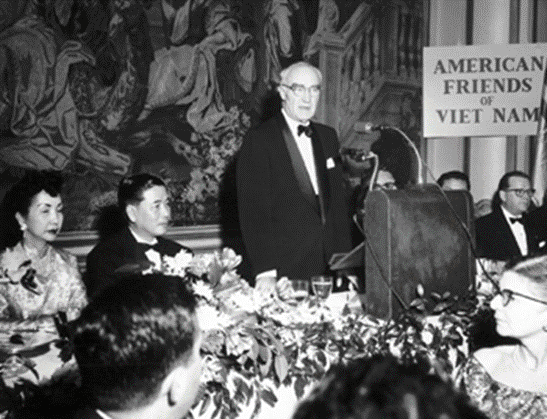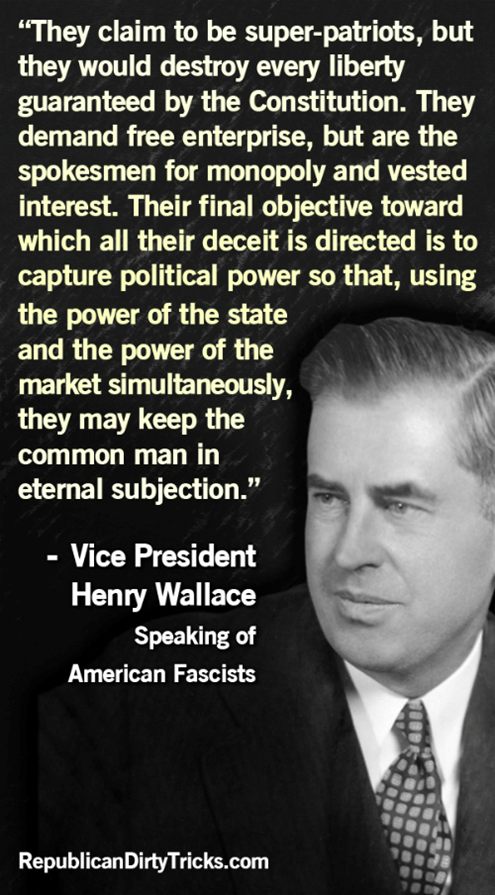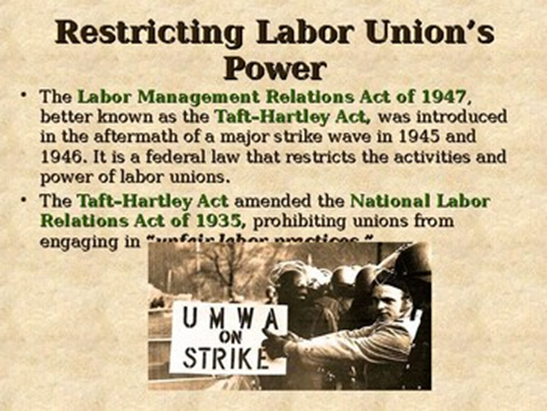Harry Targ
It is also clear that justification for empire and military
spending has necessitated the construction of an enemy, first the Soviet Union
and international communism; then terrorism; and now China. The obverse of a
demonic enemy requires a conception of self to justify the imperial project.
That self historically has been various iterations of American exceptionalism,
the indispensable nation, US humanitarianism, and implicitly or explicitly the
superiority of the white race and western civilization. (Harry Targ, “United
States foreign policy: yesterday, today, and tomorrow,” Monthly Review
Online, Oct 23, 2019)
Introduction
Henry Luce, founder of the publishing empire of Time,
Life, and Fortune magazines, wrote in 1941 that the twentieth
century was to be “the American Century.” Once the United States, in
conjunction with the former Soviet Union and Great Britain, led the way to the
defeat of fascism and militarism in Europe and Asia, he wrote, it could begin
the process of promoting democracy and market economies everywhere. This vision
of the United States as “the beacon of hope” for humankind would find its way
into the foreign policy pronouncements and political rhetoric of virtually
every president since the end of World War II.
President Reagan spoke about the US as “the city on
the hill.” President Clinton rekindled the vision of the American Century when
he proclaimed the US commitment to fight “rogue states” and to create “market
democracies” around the world. George W. Bush declared that the United States
represents what is good in the world. President Obama also claimed that the United
States has a special role to play in the world. He and others from both
political parties often refer to the US as the “indispensable nation.” And
today, President Biden has argued that the United States has the responsibility
to defend the “democracies” threatened by “authoritarian” regimes.
Supporters of US foreign policy believe that the
United States has been motivated in its participation in international
relations by altruism, by the vision of democratic values, and free markets. Some
critics of this view, the “political realists,” however, claim that US foreign
policy, like the foreign policy of all big powers, should be based upon their
core interests defined as achieving power, not moral values. Policymakers err
if they make policy based upon universal abstract principles and use those
principles to justify foreign policy. More radical writers, in the tradition of
the “historical revisionists” of the 1960s, have argued that US foreign policy
has always been designed to serve the economic interests of the nation’s
rulers. They remind us that the US has been an imperial power ever since the
“new nation” swept across the North American continent, seized land held by its
original settlers, and massacred those Native Americans who resisted the
seizure and occupation of land. For these writers, the United States imperial
vision turned global with the industrial revolution after the Civil War. By the
1890s the US began constructing an informal empire (from Cuba to the
Philippines) that ultimately has stretched all across the globe.
From this last point of view, US foreign policy since
World War II, with the struggle against the former Soviet Union and communism,
to wars in Korea and Vietnam, to military and covert interventions in
Guatemala, Cuba, the Dominican Republic, Chile, and Nicaragua, to the wars in
Afghanistan and Iraq constitute the continual drive for US empire, largely to
maximize economic gain. These theorists see historic links between the
changes and growth in the capitalist economy and imperial policies overseas. It
is not naïve ideas about promoting high principles that drives foreign policy
but material, largely economic interests, that are the root cause of such
policies.
On the Ideology of American Exceptionalism
Andrew Bacevich (“After the
American Century,” Tom Dispatch, July 12, 2022) taking off from an
earlier essay by David Bessner (“Empire Burlesque,” Harper’s, July, 2022), enriches our
understanding of the ideology that served to justify the United States drive to
global hegemony after World War Two.
In
the Bacevich and Bessner essays the authors argue that the turning-point in the
thinking of policymakers and political and cultural elites as to the goals of
the United States in the world was inspired by the famous essay by Time/Life
Magazine publisher Henry Luce. The essay entitled “The American Century,”
appeared in Life magazine shortly before the entry of the United States
into the World War. It urges policymakers and the citizenry to commit to
creating a new century in which the model of the United States, its democracy,
its economic system, and for Bacevich its religiosity, should serve as what
would later be called “beacon,” “a city on the hill,” and the “US as the
indispensable nation.”
Luce
called on the United States to be prepared to replace Great Britain as the
power to guide the world into the future and at the same time to preserve and
promote democracy and free enterprise. He quoted a British diplomat and an Economist
editorial proclaiming that Great Britain, an island nation of 50 million
people, was prepared to follow the US lead in defeating Naziism on the
continent and constructing a post-war world order overseen by the US. Above all,
Luce made it clear that the United States, a wealthy country, should encourage
the development of market economies, promote free trade, stimulate
technological developments, and in these ways oppose state interference in
economic life, for him exemplified by the Soviet Union globally and the New
Deal domestically.
In
contrast to Luce, Bacevich and Bessner argue that a wiser US foreign policy,
should be based on a complementarity of the nation’s fundamental goal, its
national interest, and a careful assessment of
its material resources to achieve it. National interest, not some
messianic ideology should govern policy. Some “realist” scholars during the
Cold War were critics of US policy because the vision of transforming the
world, as Luce envisioned it, transcended careful and modest calculations of
national interests and how to achieve them. The most distinguished realists,
such as Hans Morgenthau and George Kennan became critics of the virulent
anti-communism that drove the public discourse on US foreign policy. In this
regard, envisioning an “American century” or promoting “the free world,”
realists claimed, well exceeded the interests and/or the possibilities of
United States foreign policy.
For
example, prominent realist, George Kennan, referred in his essay, American
Diplomacy 1900-1950, to the propensity of US leaders to embrace
“moralism/legalism” when making foreign policy. Kennan traced that error back
to John Hays’ (author of the “Open Door” Notes) 1898 warning to European
nations that they should not carve up spheres of influence in China to the
exclusion of the United States. For Kennan, leaders were incorrect to think
that using threats and making grand declarations, would lead to positive results.
In addition he critiqued other
“moralists/legalists” such as Theodore Roosevelt who saw the white man’s
destiny to civilize the world or Woodrow Wilson’s desire to “make the world
safe for democracy.”
Bacevich
and Bessner develop a compelling critical narrative of the development of United States foreign policy beginning with Henry Luce’s dramatic
call for an “American Century.” For them, the Henry Luce essay was the clarion
call, that shaped the thinking and policymaking of every US administration
about foreign policy since 1941.
Bringing Class Back In
What is lacking in these, otherwise valuable contributions to our understanding of the roots of United States foreign policy is the class character of that policy and the underlying material interests that have driven that policy at least since the industrial revolution. A compelling way to describe the “class struggle” elements of US foreign policy as the Cold War was about to begin is to compare the Luce essay, which promoted a global US economic presence, with a long-forgotten speech Vice President Henry Wallace made in the fall of 1942, after the World War began (“The Century of the Common Man” May 8, 1942, Grand Ballroom, Commodore Hotel, New York, NY). Peter Dreier reminds us of the progressive vision in and around the Roosevelt Administration before and during World War II which was the basis of the struggles over the future of the US domestically and internationally after the war. https://portside.org/2013-02-04/henry-wallace-americas-forgotten-visionary
What was clear in the comparison of the two speeches, Luce versus Wallace, was that the United States would have to choose between two paths after fascism was defeated. For Luce, altruistic words would be used to rationalize the pursuit of global hegemony and crushing worker rights at home. For Wallace, US policy should be to help build a multipolar, multicultural world based on the principles of economic and social justice embedded in the post-war Universal Declaration of Human Rights. This choice was not just about ideology but about economic interests. And it is this, economic interests at home and abroad, that the realists leave out of the story.
Henry Wallace and the Century of the Common Man
“Some have spoken of the "American Century." I say that
the century on which we are entering -- the century which will come into being
after this war -- can be and must be the century of the common man.” (Henry Wallace, “The Century of the Common
Man.”). https://www.americanrhetoric.com/speeches/henrywallacefreeworldassoc.htm
In this speech Henry Wallace praises the evolution of human society over the course of several hundred years. Particularly, he alludes to the “Great Revolutions of the people, there were the American Revolution of 1775, the French Revolution of 1792, the Latin-American revolutions of the Bolivarian era, the German Revolution of 1848, and the Russian Revolution of 1917].” This evolution involved the march of science, increased industrial progress, rising literacy, and broad access to education. He proclaimed that “everywhere the common people” were “on the march.”
Then Wallace
addressed the main point of his argument, the freedom from want. And to that
want, much work, he suggested, needed to be done. “But when we begin to
think about the significance of freedom from want for the average man, then we
know that the revolution of the past 150 years has not been completed, either
here in the United States or any place else in the world. We know that this
revolution cannot stop until freedom from want has actually been attained.”
The Political and Economic Contexts of the Luce and Wallace
Statements
“Everywhere, reading and writing are accompanied
by industrial progress, and industrial progress, sooner or later, inevitably
brings a strong labor movement. From a long-time and fundamental point of view,
there are no backward peoples which are lacking in mechanical sense. Russians,
Chinese, and the Indians both of India and the Americas, all learn to read and
write and operate machines just as well as your children or my children... They're learning to think and work together in labor movements, some of which
may be extreme or a little impractical at first, but which eventually will
settle down to serve effectively the interests of the common man.” https://www.americanrhetoric.com/speeches/henrywallacefreeworldassoc.htm
It is
critical to remember that the historical contexts in which the Luce and Wallace
statements appeared. The Luce essay appeared in Life magazine shortly
before the United States entered World War II and Vice-President Wallace’s
speech, for the most part a challenge to the Luce perspective, was presented
after the US entered the war.
In both cases,
the speeches were inextricably connected to intense political and economic
struggle that characterized the 1930s. Of course, this context included a Great
Depression; halting but then substantial programs to stimulate economic
recovery (the New Deal); the mobilization of millions of workers who were
demanding the right to form unions; the continued though tarnished reputation
of a socialist alternative to capitalism, the former Soviet Union; vibrant
Communist movements in the United States and around the world; and a
broad-based “cultural front” of artists, intellectuals, trade unionists,
anti-racists, and anti-fascists who envisioned a radically different post-World
War from what preceded it.
It was no
accident that the Luce speech referred to the world order that existed in the
era of the British Empire and Wallace referred to the revolutionary ferment in
the United States, Germany, France, Latin America, the Soviet Union, and China,
and elsewhere in the Global South. Luce wanted to recreate the capitalist world
order of the past while Wallace spoke to the creation of a revolutionary order
that privileged the “common man” in the future. And the Vice-President
specifically mentioned labor as a key player in his vision of a post-war world
order.
US Labor’s Vision of the Post-War Period: To Limit the Power of Capitalism at Home as well as Overseas
To more
effectively prosecute the war effort leaders of the new vibrant and militant
trade union confederation, The Congress of Labor Organizations (CIO) and the
older American Federation of Labor (AFL) agreed to postpone “class struggles”
at the workplace. With much protest from the rank and file the CIO signed a “no
strike pledge” to be in effect for the duration of the war. In exchange, the
Roosevelt Administration agreed to oppose efforts to bust unions and to
establish price controls (along with wage freezes).
Leaders of
the labor movement assumed that after the war, labor which had earned a right
to collaborate with capital and the government in policymaking, would assume an
ever-larger role in public policymaking. CIO militancy in the late 1930s, the
organizing of four million industrial workers in key industries, such as steel,
auto, electronics, railroads, meat packing, meant that labor would, while not
overthrowing capital, be co-equal with capital. And this assertion of labor
rights would parallel the anti-colonial struggles occurring throughout Asia and
Africa. This was to be, in Henry Wallace’s words, “the century of the common
man.”
But, as was said above, the Luce vision was
one of reestablishing the hegemony of capital over labor at home and abroad.
The clash of visions could be seen in the turbulent year of 1946: on labor’s
side the largest strike wave in American history driven by its demand to be
part of economic planning, wage increases, and the right of all workers to
choose to join unions; and on capital’s side demands on government to end price
controls and establish laws limiting the rights of workers to form unions.
The
turbulence, capital against labor at home, occurred as tensions rose between
the United States and the former Soviet Union abroad. The Truman Administration
embraced the Churchillian vision of “an iron curtain descending across Europe,”
launching covert campaigns against Communist parties in Europe, preparing to
enter the Greek Civil War on the side of its reactionary government, and
beginning the campaign against “domestic communists.” The clarion call of a new
era, in the spirit of Luce, was President Truman’s famous “Truman Doctrine”
speech in March 1947, warning of the dangers of “international communism.”
Domestically, the new Republican Congress passed the Taft-Hartley Act,
significantly weakening workers’ ability to form unions. It included a
provision requiring union leaders to sign a pledge that were not “communists.”
Comparing the competing Luce/Wallace visions of the
post-war world suggests that the outcome, a clear victory of the Luce
perspective, was about more than ideology-the American Century, American
Exceptionalism, etc. It was about material interest. (See an example of the
political economy explanation of US foreign policy below:
https://heartlandradical.blogspot.com/2018/05/strategy-of-empire-in-decline-cold-war.html)
Was public policy to serve the interest of capitalism or would it serve the interest of labor? From this point of view ideology is a tool used by political and economic elites to argue for given policies, particularly in an increasingly centralized media and popular culture, rather than the roots causes of that policy. When Truman advisors were meeting in February, 1947 to discuss the “communist threat” to Greece, the Republican Senator from Michigan Arthur Vandenburg (a former isolationist) declared that the Republican Party would support a global mobilization against the Soviet Union (and one could surmise against labor militancy at home) but he advised the president to “scare hell out of the American people.”
Celebrating the American century and identifying the threat
to it abroad, “international communism” as manifested in the Soviet Union and
China, and communism at home, as exemplified by a militant labor movement,
constituted the conceptual tool for United States economic expansion on a
global basis. And variants of this conceptual tool have been used ever since to
secure support for United States foreign policy.








